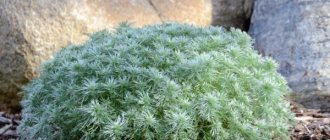Catalpa is a tree of the Bignoniaceae family. The plant's homeland is China, from where it spread to North America and Japan. Despite this, the tree is actively grown in the southern part of the Russian Federation. The plant is classified as an evergreen. Regardless of the time of year, the leaves of the trees do not change their color.
The name "Catalpa" comes from the Indian tribe of the same name. Its inhabitants believed that the tree brought happiness, and the flowers contributed to the birth of children.
Description of the species
Catalpa is a plant up to 30 m high. In Russian latitudes, medium-sized species of catalpa grow, which grow to a maximum height of 6 m. The bark of the tree is finely scaly and has a light gray or brown tint.
The branched root system is capable of growing horizontally, going up to 2 meters deep into the ground. The tree trunk grows 20 cm wide.
The tree has a spreading crown. The leaves are ovate, sometimes heart-shaped, up to 30 cm long. The flowering period depends on weather conditions. It usually falls in May or June. At the beginning of summer, white flowers appear on the branches of the catalpa, emitting a sickly sweet smell. Externally, the flowers look like slightly swollen small bells collected in panicles. The corollas are milky in color, and the throat has a few dark spots. After flowering, the plant bears fruit - elongated pods with seeds appear on the branches. When ripe, the seeds turn gray-brown.
The catalpa tree has another interesting name - pasta tree. The fact is that the pods have a bizarre pasta shape. Although the fruits ripen in the fall, they hang from the branches all winter.
Types of catalpa
The most popular varieties of kapalta are:
- The beautiful catalpa (speciosa) is the most frost-resistant plant species, capable of growing up to 30 m in length. In Russian latitudes, the trunk height does not exceed 15 m. The thin-plated crown has a pyramidal shape. The green foliage forms a heart shape. The first flowering occurs when the tree reaches 10 years.
- Catalpa bignonioides - grows up to 20 m. The leaves on the branches are arranged oppositely and fall off very early. Flowering occurs in June - erect inflorescences with funnel-shaped flowers appear on the branches. The flowers are slightly fragrant, about 5 cm long. There are red spots inside the flower, the edges of the petals are slightly corrugated. In another way, bignonia-shaped catalpa is called lilac-leaved.
- Catalpa bunge is an ornamental species that grows mainly in China. During the flowering period (July to August), the plant is covered with white flowers with purple spots. The inflorescences are much smaller in shape than those of their “brothers”. The crown is pyramidal in shape and the leaves are ovoid. This variety is very thermophilic and moisture-loving. It is not recommended to grow the crop in the northern regions of the country.
- Catalpa ovate is a tree that can grow up to 10 m in height, but when planted in the garden its growth is no more than 3.5 m. This variety has a short growing season and is found in the form of a shrub. Withstands temperatures down to -29 °C. Flowering occurs late. For this reason, the fruits do not have time to ripen.
- Catalpa Fargezi is a tree with a spreading crown, up to 25 m high. The main feature of this variety is the large inflorescences of a bright pink hue. The plant has high frost resistance and can withstand temperatures down to -30 °C.
Each of the above varieties has its own varieties. There is also a hybrid catalpa, which was obtained by crossing two varieties. This tree grows up to 16 m in height. It is this species that is most often used by landscape designers in the process of decorating the garden.
The following varieties are very popular among gardeners:
- Catalpa blushing (Purpurea) is a tree that, in ideal conditions, reaches a height of up to 25 m. The crop loves well-drained soil, but is able to adapt to dry soil. Flowering begins at the end of spring - bell-like corollas appear on the tree, inside of which there are bright spots.
- Aurea is a medium-sized tree with golden leaves that forms a wide-angled crown. Externally, the leaves resemble lilac flowers. Flowering duration is 2.5-3 weeks. Ideal for both single and group plantings.
- Quene is a tree with large, heart-shaped leaves. The foliage has a yellowish tint with a green center.
- Nana is a tree reaching a height of 4-6 m. This variety prefers to grow in brightly lit and windless places. It does not set flowers, which means it is ideal for landscaping public places. It grows very slowly, but can develop in loamy soils.
Sometimes another plant, Paulownia, is mistaken for Catalpa. They are very similar to each other in appearance, but differ in fruits and seeds.
Catalpa care
On fertile soils with sufficient lighting, catalpa annually produces good growth and pleases with abundant flowering already in the 4th - 5th year. Caring for a tree is simple and not labor-intensive: during the growing season the plant needs moderate watering and rare fertilizing, in the spring formative and sanitary pruning is important, and in the fall measures are necessary to increase the winter hardiness of young seedlings (mulching, covering with spruce branches, wrapping the trunk with burlap).
Catalpa responds well to fertilization. During the season, it is enough to carry out two feedings:
- at the beginning of active growth of slurry;
- during the period of mass flowering with complex mineral fertilizers.
Fertilizing is carried out immediately after abundant watering.
Spring pruning is necessary to preserve the decorative appearance of the crown. Remove dry and broken branches and blackened tips of young shoots damaged by frost. Catalpa tolerates pruning well and lends itself well to shaping.
Magnificent catalpa - Catalpa speciosa
Planting and care
In order for the tree to take root, it is necessary to correctly select and prepare the planting site.
To plant a catalpa, you will need to find a lit area. If the leaves don't get enough light, they will become small and lose their beauty. Also, the space must be reliably protected from drafts; strong gusts of wind can severely damage the foliage of the catalpa.
The soil must be fertile and not have stagnant water or close groundwater. There should be no other tall trees or buildings near the planted seedlings - catalpa requires a lot of light.
For planting, seedlings purchased from nurseries are used. The age of planting cuttings must be at least 2 years. The crop can be planted either in autumn or spring.
The landing algorithm includes:
- Creating a planting hole about 1 meter deep.
- Filling the hole with a drainage layer of 20 cm.
- Preparation of a nutrient mixture consisting of 500 g of humus, 500 g. sand, 400 gr. earth and peat. The resulting composition is used to fill the remaining space in the hole.
After the preparatory work, the seedling is planted in the center of the hole, straightening the roots. The soil mixture is poured to the edge of the hole and then lightly compacted. Finally, the plant is watered and the circle is mulched with sawdust.
The trees are watered regularly; 20 liters of water are added to the plant every week. During the first few years after planting, fragile seedlings are covered with spruce branches for the winter.
This way, the plant’s roots will not freeze. With the arrival of warm days, the shelter is removed. Mature trees have high winter hardiness, so there is no need to cover them with burlap.
Catalpa should be trimmed in spring and autumn. Spring pruning of catalpa should be completed before buds form. The gardener should remove only frozen and injured branches. In the fall, the crown is formed, leaving branches ready for winter.
The crop is not fertilized for some time after planting. After 1-2 years, it is recommended to carry out the first fertilizing with organic fertilizers. In the spring, fertilizing is carried out using a solution of nitroammophosphate, and in the fall they switch to potassium-phosphate mixtures.
When caring for catalpa, you should not allow a dry crust to form on the surface of the earth. To avoid its appearance, the soil should be periodically loosened to a depth of 30-40 cm.
If you properly care for the tree, it will begin to develop and in a few years will delight you with its flowering.
Catalpa care
How to grow catalpa in the garden
Catalpa is moisture-loving, so it needs weekly watering, especially in hot and dry weather.
If you make the plant thirsty, its leaves will lose turgor and droop, which will damage the decorative appearance of the catalpa. Approximate water consumption is 2 buckets per adult plant. In cool or rainy summers, and also provided that the catalpa tree trunk is mulched, you can water the tree 2-3 times a month. After watering or natural precipitation, it is easier to loosen the soil in the tree trunk circle to a depth of 30 cm and get rid of weeds. In dry heat, catalpa is moistened more often. Growing catalpa requires regular feeding of the plant: twice a season you need to add a solution (1:10) of rotted manure to the soil at the rate of 5-6 liters per adult tree. Catalpa responds well to spring feeding with Nitroammophoska and autumn feeding with potassium and phosphorus fertilizers: at this time of year the tree does not need nitrogen.
Catalpa pruning
It is better to prune catalpa in the spring, before the buds on the tree begin to swell: remove frozen, damaged, diseased and dry branches. A plant is usually formed with a trunk height of 1.2-2.0 m, above which the catalpa branches into a low spreading crown of 4-5 skeletal branches. Subsequently, the skeletal branches of the tree are shortened, if necessary, and thickening branches and shoots are cut out.
Pests and diseases of catalpa
Catalpa is resistant to both pests and diseases, but sometimes, if it is weakened, Spanish flies can cause trouble, from which the plant can be eliminated by double treatment with pyrethroids Decis or Fastak. It’s worse if stem pests, horntails—hymenoptera insects, the adults of which look like hornets—establish themselves on the catalpa. The females lay eggs in the wood of the catalpa, and the larvae that emerge from them make tunnels in it and fill them with drill flour. Trees damaged by horntail larvae weaken and begin to dry out. As a rule, catalpas in which horntails live cannot be saved. But you can protect the tree with the help of prevention: healthy and strong plants are not affected by horntails.
If in the second half of summer you notice that the leaves on the lower part of the crown of the catalpa began to droop, turn yellow and fall off, it is possible that it is suffering from wilt - verticillium wilt. This is a severe fungal disease, as a result of which the plant sometimes loses foliage on only one side and therefore looks one-sided. At an early stage of the disease, it can be cured if you treat the tree with Topsin-M, Fundazol and water it at the root with Maxim or Rovral. For preventive purposes, catalpa is treated with the fungicides Previkur, Quadris or Falcon.
Catalpa in the Moscow region
If you want to start growing catalpa in the middle zone, then you need to start by choosing planting material: you need winter-hardy seedlings. The most frost-resistant species is the magnificent catalpa. Catalpas ovoid and bignonia are also acclimatized in the middle zone. Of the catalpa bignonia varieties, Aurea (a variety with golden leaves), Pict (a form with variegated, variegated foliage), Catalpa Nana (a non-flowering compact form of the plant) and Plena (a variety with double flowers) grow well in the Moscow region.
To successfully grow catalpa, it is necessary to fulfill certain conditions: place the seedlings on well-lit and moistened neutral loams on the south side of buildings or dense coniferous plantings, provide them with protection from the wind and shelter for the winter for at least the first 2-3 years. In the future, winter-hardy catalpa varieties do not need to be insulated for the winter, and if they freeze one year, they will easily recover in the next growing season.
Reproduction
Catalpa propagates by cuttings and seeds. Each of these methods has its own characteristics.
Growing catalpa from seeds at home is not difficult. In appearance, catalpa seeds resemble bean pods. They are collected in the fall and then stored in a cool, dry place for 2 years.
Before planting, the seed is soaked in warm water. In February, you can plant it in a greenhouse or in a container, covering it with film. If you keep the plant in a room with a temperature of +25°C, then after 3-4 weeks the seeds will begin to germinate.
Sowing seeds in an open area is carried out in the fall. With the onset of spring, the first shoots appear. They require careful care. During the growing season, you should regularly water and loosen the soil, as well as remove weeds. After a year, the plant will grow half a meter in height.
Cuttings are another way to propagate catalpas. Healthy shoots up to 10 cm long are used as cuttings.
Before planting, the cuttings are treated with a special compound that stimulates plant growth, and they are planted in a container with soil. The very next year, seedlings can be transplanted into the ground. By this time, they will have time to develop additional buds, rhizomes and leaves.
Catalpa - how to grow, care
Choose a place for planting catalpa that is sunny, protected from cold winds - drafts, especially frosty ones, are the main enemy of not only young catalpa seedlings, but even a fully grown tree.
The seedling is planted in a hole to a depth of 70 to 120 centimeters. A garden mixture of peat, sand, humus and leaf soil (ratio 1-2-3-2) is well suited for planting catalpa.
Don’t be too lazy to add 5-7 kilograms of wood ash under the catalpa seedling when planting; you can add a little phosphate rock - it will be more reliable, after all, the tree is picky.
To plant catalpa seedlings, it is recommended to choose sunny, wind-protected places, since large and delicate leaves, characteristic of all species, are severely damaged in drafts. Plants are planted to a depth of 0.8-1.2 m.
Link on topic: Growing dogwood - healthy, beautiful and tasty
The best soil acidity for catalpa is ph7. Catalpa easily tolerates transplantation, which is best done in the spring, and early. Catalpa can be propagated by layering, cuttings and seeds, which it has in abundance.
Watering is not frequent and not abundant - 15-18 liters per tree, no more than once every seven days, unless there is a prolonged drought.
Catalpa also responds very well to fertilizing (growth accelerates very significantly). Feeding is applied once, twice, maximum three times in one season. The same slurry is used as fertilizer (approximately 5 liters per tree)
Catalpa pruning should be carried out annually; in the spring, be sure to remove dry branches damaged by frost.
After pruning, the catalpa restores its crown literally before our eyes, so take the pruners to shape it without fear.
It is better to protect young catalpa seedlings from frost with burlap, and mulch the soil around the tree trunks.
In severe frosts, it is better to cover young seedlings completely, for example, just as you protect roses from frost; at worst, cover them with the same burlap. The older the catalpa becomes, the less it will need anti-frost protection.
The experience of growing catalpas has clearly and repeatedly shown that their winter hardiness and frost resistance depend on the seeds and cuttings from which the seedlings themselves are grown. Therefore, for planting, try to buy catalpa seeds and seedlings from the region closest to you (if we are talking about ordering seeds by mail).
Diseases and pests
Catalpa has increased resistance to diseases and pests. If the plant has been affected by insects, then treatment should be started immediately. Otherwise, the tree will die.
Diseases that catalpa can get:
- Verticillium wilt is a fungal disease that is transmitted through soil. The fungus penetrates the root system and begins to spread throughout the plant. Young shoots die first, followed by leaf blades that begin to dry out. To combat wilt, copper-containing preparations or fungicides are used.
- Spanish fly infestation - to get rid of these black beetles you will need to resort to insecticides. Gardeners recommend using Karbofos. If insects have infested in unopened buds, then the tree is treated until they bloom. Otherwise, young shoots will become deformed.
Advanced diseases are difficult to treat, so the plant is treated immediately after the first suspicious signs appear.
Sometimes the tree's bark begins to peel off. There may be several reasons for the problem:
- Damage to the bark by rodents or bark beetles.
- Sunburn.
- Excessive application of fertilizers to the soil.
- The presence of a large number of ripened fruits on the tree.
It can be difficult for an inexperienced gardener to understand the reasons.
Catalpa care
Catalpa is a moisture-loving plant; therefore, it needs to be watered once a week, especially during hot and dry periods. If the tree experiences a lack of water, its decorative value will greatly decrease, as the leaves will lose turgor and sag. For 1 adult catalpa, 20 liters of water are taken per 1 watering. If the summer period turns out to be damp or cool, watering can be reduced to 2-3 times a month. The same amount of watering is required for a plant with a mulched tree trunk. After rain or watering, it is recommended to loosen the soil surface in the tree trunk circle to a depth of 0.3 m, while simultaneously weeding. If there is a prolonged drought, the amount of watering must be increased.
Top dressing
Do not forget to systematically feed the tree. To do this, it is necessary to add a solution of rotted manure (1:10) to the soil, while 5 to 6 liters of the nutrient mixture are taken per 1 adult tree. This feeding is carried out 2 times per season. In the spring, it is recommended to feed the catalpa with Nitroammophoska, and in the fall - with phosphorus and potassium fertilizers; at this time it does not need nitrogen.
Trimming
It is recommended to prune in spring before the buds swell. During this procedure, you should cut off all injured, dried out branches damaged by frost, diseases or pests. The tree is formed, as a rule, with a trunk height of 120 to 200 centimeters, above which the plant branches into a spreading low crown of 4 or 5 skeletal branches. After some time, if necessary, the skeletal branches of the plant are shortened, while thickening stems and branches must be removed.
Diseases and pests
Catalpa is highly resistant to both diseases and pests. But in the case when the plant is very weak, Spanish flies can settle on it. In order to destroy them, you will need to treat the plant with a pyrethroid (Fastak or Decis) twice. Stem pests, horntails, can also settle on this plant; they are hymenopteran insects, while their adults are very similar in appearance to hornets. The wood of such a tree serves as a place for adult females to lay eggs. After some time, larvae emerge from them, making passages in the wood, and then filling them with drill flour. Catalpas infected with such larvae weaken greatly and gradually dry out. Most often, specimens affected by horntail die, but it should be remembered that if the tree is completely healthy and strong, then it is not afraid of any pests.
Catalpa may suffer from verticillium wilt (wilt), in which case from mid-summer on the lower part of its crown you will notice yellowing, drooping and dying of leaf blades. This fungal disease is quite serious; it often causes the tree to lose leaf blades on only one side and appear one-sided in appearance. If the disease is just beginning to develop, then you can try to cure the plant; to do this, it should be watered at the root with Rovral or Maxim, and also treated with Fundazol or Topsin-M. For prevention purposes, trees can be sprayed with fungicides such as: Quadris, Previkur or Falcon.
Growing in the Moscow region
If you are going to cultivate such a tree in the middle zone, then you should choose frost-resistant species and varieties for planting. The most frost-resistant species is the magnificent catalpa. In mid-latitudes it is still possible to grow bignonia and ovoid catalpa. The following varieties are also suitable for cultivation in the Moscow region:
- Aurea. The foliage color is golden.
- Pict. The color of the leaf blades is variegated and variegated.
- Nana. This compact form is non-flowering.
- Captivity. The flowers of this variety are double.
In order for growing catalpa to be successful, you need to remember several important nuances. For planting, you should choose a sunny area, the soil should be moist loam of neutral reaction. Catalpa should be located in dense coniferous plantings or on the south side of the building. For the first 2 or 3 years, the plant needs mandatory protection from gusts of wind, and it should also be well covered for the winter. Older specimens belonging to winter-hardy varieties do not need shelter for the winter. In the event that they do freeze severely, then with the onset of the growing season they can quite easily fully recover.
Decorative plants for the garden. Catalpa or monkey tree Garden World website
Meaning and Application
Catalpa is a plant that is used as a main ingredient in homeopathic medicines. However, many gardeners are treated with the plant at home.
A decoction of tree bark is used for problems with the digestive system. The decoction helps get rid of diarrhea and improve metabolism. The fruits and leaves are used as a remedy in the treatment of cancer, abscesses and diseases of the respiratory system. Medicinal tinctures based on bark help against inflammatory processes.
The roots of the plant are prohibited from being used as medicinal raw materials due to their high toxicity. In addition, tinctures and decoctions are not recommended for use by pregnant women and adolescents under 14 years of age.
Catalpa wood is very moisture resistant, so bath furniture, gazebos and outdoor benches are made from it. The wood does not require painting; it is enough to cover it with several layers of varnish. Catalpa furniture is a popular but expensive product. You can make such furniture by ordering it from a craftsman.
Use in landscape design
Catalpa is often used in landscape design. It is planted in group plantings and individually. High resistance to adverse conditions helps it grow near the entrance area of a building, near shopping centers and cafes.
The plant should be planted in the garden next to golden and bright red flowers. By surrounding a flowering tree with a rosehip hedge, the designer will be able to create a year-round decorative composition.
In small areas, catalpa is planted in the center to make a special emphasis on it. In large gardens, the tree is grown next to coniferous and oak crops. The magnificent catalpa variety is perfect for wide alleys, and the bignonia variety is perfect for narrow paths.
In addition, catalpa roots can strengthen slopes. For this reason, the plant is often grown near steep shores of lakes and small fresh water bodies.
Growing catalpa
Gardeners and vegetable gardeners are attracted by the tree, first of all, by its appearance: a thick, dense crown with large flowers and leaves, as well as long pods, like earrings, hanging and swaying in the wind.
The bright green foliage leaves no one indifferent. Passers-by seem to freeze when they look at the plant.
Lilacs will help create a beautiful composition in the garden.
Tall plants are planted individually, and small ones are good in groups, as a frame for garden paths and paths.
A powerful root system strengthens slopes, even consisting of loose and unstable soil, which is why catalpa can often be found on steep banks of lakes and rivers.
Catalpa planting
For harmonious growth and development of plants, select well-lit and windless areas, since young, weak shoots can break from strong gusts of wind.
Catalpa is planted in spring, in fertile, loose soil.
- If the soil on the site is heavy, then it must be dug up with the addition of humus and sand.
- Before transplanting a plant from a container, it must be watered abundantly, and after planting it must be mulched with peat.
- The acidity of the soil for growing catalpa should be neutral or slightly acidic.
Reproduction of catalpa
Catalpa can be propagated either by seeds or cuttings. Both methods give excellent results, so summer residents choose the most convenient option for themselves.
Propagation by seeds
Ripe plant seeds can be suitable for planting for three years if the storage conditions are followed.
- To grow a tree from seeds, you need to prepare a container with loose, fertile soil.
- Before the onset of spring, the seed must be soaked in water at room temperature for 12 hours, and then planted in a container to a depth of 0.5 - 10 millimeters.
- The container must be covered with film.
- The seeds will sprout in 3-4 weeks provided there is sufficient light, air temperature from 15 to 25 degrees, regular watering and ventilation.
After germination, the plant remains warm and only in the spring, during the period when active sap flow begins, catalpa seedlings can be planted in open ground. In nurseries specializing in breeding catalpa, you can purchase one-year-old or two-year-old seedlings and plant them on your site directly in open ground.
Propagation by cuttings
At the end of summer, cuttings are cut from the young branches of a grown plant and specially prepared containers are planted in fertile soil in a vertical position, having previously been treated with Kornevin.
For the first few weeks, catalpa cuttings are covered with plastic bottles. The plants will take root after a month. For the winter, young shoots are transferred to a warm place, and in the spring they are transplanted into open ground.
Catalpa care
If the catalpa tree is planted taking into account all the recommendations, the plant will take root safely and will not require special care.
- The tree needs abundant watering weekly, especially during periods of lack of rain.
- Once a month the soil requires loosening and weeding.
Loosening the soil provides oxygen access to the root system and this is very important for successful development. The plant needs feeding at least 2-3 times during the active growth season. Trees are fertilized with manure, compost, superphosphate, depending on the composition of the soil. An adult tree tolerates winter well, but young plants need to be insulated.
- For these purposes, any covering material or burlap will do.
- Catalpa is pruned in the spring before the buds swell to remove frozen branches and to give the tree shape. Do not prune the tree too much to avoid causing thickening. If the foliage does not have enough free space and light, it will become paler and smaller and the decorative appearance of the plant will be lost.
The plant is particularly resistant to diseases and pests, and this makes catalpa care much easier.
To minimize the risk of mold, mildew and parasites appearing on a tree trunk, you just need to follow the watering regime and avoid high humidity.
If insect pests do appear on the tree, they must be destroyed with the help of insecticides.
Planting and caring for catalpa is so simple that even a novice gardener, without special skills and knowledge, can easily grow an exotic tree on his plot.
Catalpa grows quite quickly, is not capricious, easily adapts to growing conditions and is a real decoration of the garden plot. The combination of different plant varieties with green and golden leaves looks especially attractive.
Catalpa is magnificent in landscape design
The beautiful catalpa is rarely used in solitary plantings - for this purpose the tree is undersized. Most often it is part of a group composition, and the plant is combined mainly with deciduous magnolias. Carefully pruned trees frame paths in gardens and parks, and they are also used to strengthen slopes on the banks of decorative ponds. The beautiful catalpa is also placed near fences and fences.
Planting a young seedling
All kinds of nurseries offer fans of greenery ready-made trees that can be immediately planted on the site. Quite a suitable option for busy people. The procedure is carried out in early spring before the sap begins to flow or after the orchid tree has shed its leaves.
In an open area, a place for catalpa is chosen, taking into account neighboring crops. They should be at a distance of 5 m. Then they dig a hole 1 m deep and 70 cm wide.
Fertile soil is prepared from the following components:
- humus (3 parts);
- sand (2);
- sheet soil (2);
- peat (1);
- wood ash (5 kg);
- phosphate rock (50 g).
Acidity should not exceed a pH level of 7.5. The bottom of the funnel is covered with drainage made of broken bricks or crushed stone. The prepared soil mixture is poured on top, leaving room for the catalpa root system. A seedling is placed in the center. Fill up the remaining soil. Compact with feet. Water generously. Mulch the tree trunk area.
The root collar should be slightly above ground level.
Planting in open soil
- Any garden catalpa is an ornamental plant, so its planting and care must be appropriate. In specialized establishments you can buy one-year or two-year-old seedlings. Catalpa should be planted in open soil either in the spring, before sap begins to flow, or in the fall, before all the leaves fall from the trees. It needs to be planted in a well-lit place where there is almost no wind.
- It would be great if the groundwater lies deep under the tree. Catalpa needs a lot of space, so it and any other plant should be separated by at least four meters - this is the minimum. The landing pit should be a meter deep and the width equal to seventy centimeters. To fill the hole, you need a soil mixture (recipe above). This mixture needs to be mixed with five to eight kilograms of wood ash and only fifty grams of phosphate rock. The acidity of the resulting mixture should be 7, plus or minus 0.5.
Catalpa is usually planted in the spring, but it can also be done in the fall.
The bottom of the pit must be laid out with a drainage layer of one and a half ten centimeters. You can use crushed stone or, alternatively, broken brick. Then you need to pour the nutrient soil mixture into the hole almost to the very top, then place the roots of the seedling, and then finally fill the hole with the same prepared soil. Next, you need to slightly compact the soil and generously water the plant. When planting catalpa, you need to make sure that its root neck is slightly above the soil level. When the water is absorbed into the soil, the root collar should already drop to its level. And finally, after watering the catalpa, the tree trunk circle must be mulched with some organic matter, for example, peat.
The place needs to be open and well lit by sunlight. Catalpa can also be planted in soil that is not very fertile. If it is too fertile, too many young shoots will appear. More than half of them will simply die off in the winter. You can feed with humus or charcoal. It is ideal if the soil is well drained and its acidity is neutral.
It is better if the soil is drained
Catalpa is very harmful if groundwater lies near it, and also if it is flooded by stagnant water. It is much better to moisten the soil moderately.











